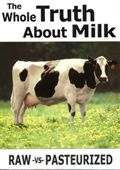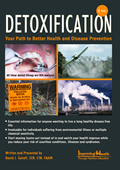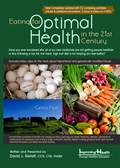CARDIOVASCULAR MEDICATIONS USELESS FOR MAJORITY OF DIABETIC PATIENTS
By
Byron J. Richards, CCN
September 4, 2010
NewsWithViews.com
A new study published in the Archives of Internal Medicine demonstrates that three-fourths of diabetic patients receiving medication for cholesterol and blood pressure receive very little benefit. In fact, the case for “benefit” can only be justified for those in truly horrid health. For the rest, a snake pit of adverse side effects is the reality.
“Most of the total benefit was limited to the first few steps of medication intensification or to tight control for a limited group of very high-risk patients,” the authors write. The nearly three-fourths of patients at average risk, however, received very little benefit. “By accounting for treatment-related harms, we identified numerous examples in which intensifying treatment would be contraindicated on the basis of risk-benefit considerations, and many more instances in which the expected benefits would be so small that shared patient-clinician decision making would seem to be the appropriate medical intervention.”
“Given the large set of factors that moderate the benefit of treatment intensification, including patients’ underlying cardiovascular disease risk, the diminishing efficacy of combination therapy and increasing polypharmacy and adverse effects, we recommend a strategy of tailoring treatments to individual patients on the basis of their expected benefit of intensifying treatment,” they conclude. “Current treatment approaches that encourage uniformly lowering risk factors to common target levels can be both inefficient and cause unnecessary harm.”
“Like all models, this one involves numerous assumptions, mysterious concepts, such as disutility and discounting, and statistical approaches unfamiliar to many physicians,” writes Andrew L. Avins, M.D., M.P.H., of Northern California Kaiser Permanente Division of Research, Oakland, in an accompanying editorial. “And, like all models, there are assumptions that could be disputed (e.g., specific treatment strategies and baseline estimates of some parameters). However, the lessons to be gleaned from this simulation are profound.”
“Most important, the results starkly challenge some fundamental assertions regarding the appropriate treatment of patients with diabetes mellitus,” Dr. Avins writes. “Over the years, practice guidelines have advocated increasingly tighter control of blood glucose and cardiovascular risk factors, often relying on logical inference to extend thresholds beyond the available empirical evidence. The model developed by Timbie et al suggests that the diminishing returns of more aggressive therapy might not only be inefficient but potentially harmful.”
“The principles illustrated by the model of Timbie et al are general and apply to virtually all preventive interventions,” Dr. Avins concludes. “One wonders why such examinations are not generally incorporated into the guideline development process rather than, as in this case, conducted in response to it.”
| Subscribe to the NewsWithViews Daily News Alerts! |
What you have just read is absolutely stunning and calls for an entire revamp of the toxic drug overload of Americans under the false pretense of improving health. This is costing the health care system tens of billions in fake snake oil treatments of diabetic patients and the whole paradigm applied to the overall subject of Western medicine is costing more than a hundred billion per year in blatant public health fraud.
There is no shortcut to health. If you want better numbers, take the initiative and make it a priority to get healthy. Drugs don’t produce health and never will.












 Share
This Article
Share
This Article






